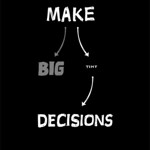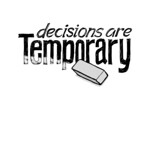Communicating how agile development works to anyone in a large organisation is never easy.
The (over simplified) scenario I have been using to introduce people has been
“let’s imagine your site/app crashed, and you were told it couldn’t be recovered. what would you need tomorrow? That’s the first thing we will do. “
Getting to the businesses core requirements can sometime be a struggle, but this scenario gets people to focus on what is truly important to them. It causes people to think about how their business works and just what they need to get the core business done.
It also introduces them to the concept of doing important first, delivering a minimum viable product and iterating to improve a system or process.
now there are some bends in the the “doing what you need first” rule because you need your foundations, and the customer is unlikely to tell you they need them, but generally we build what the customer needs first, then we ask the question again, and again until we are done.

With the migration of liverpool.gov.uk the client relationship was diffrent. We effectively owned the customer role and development role. Now in many ways this isn’t ideal, but it does give you very quick and easy access to the customer at any time on the project.
For agile to succeed you need access to the decision makers. The direction and momentum of the project will be dependent on this and you can’t wait around for a decision to go up a tree, float around and come back, it has to be made and you move on.  making small decisions quickly is the key to maintaining momentum. and making many small decisions means the cost of failure is less.
making small decisions quickly is the key to maintaining momentum. and making many small decisions means the cost of failure is less.
All too often I have seen large organisations agonise over a decision only for it then not to be the right one (that’s ok it happens) but then compound the issue by not wanting to change direction because they spent so long deciding in the first place.
If you decide fast, you can fail fast, change direction and carry on.
By building agile you can see the effect of your decisions, evaluate and carry on just as quickly.
_(artwork from 37 signals - re:work - you should read it - it’s very good)_